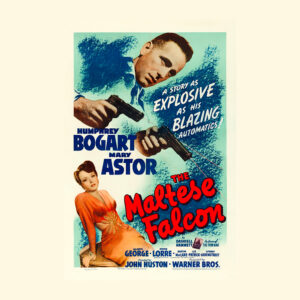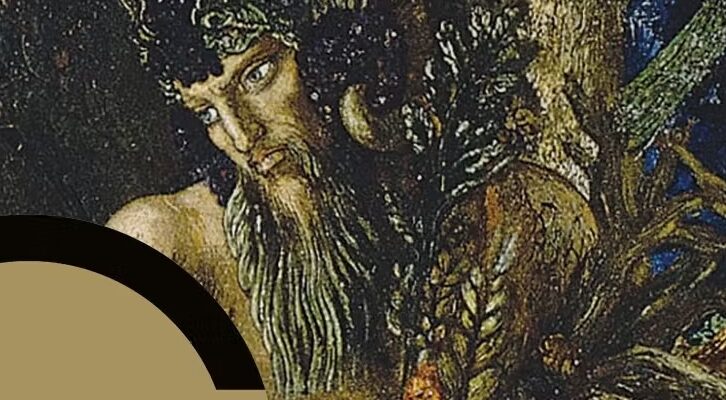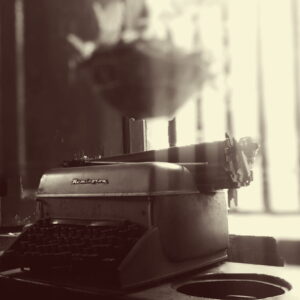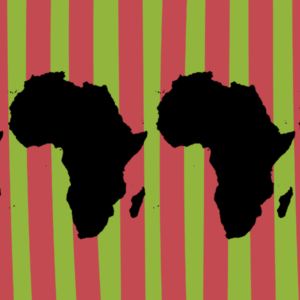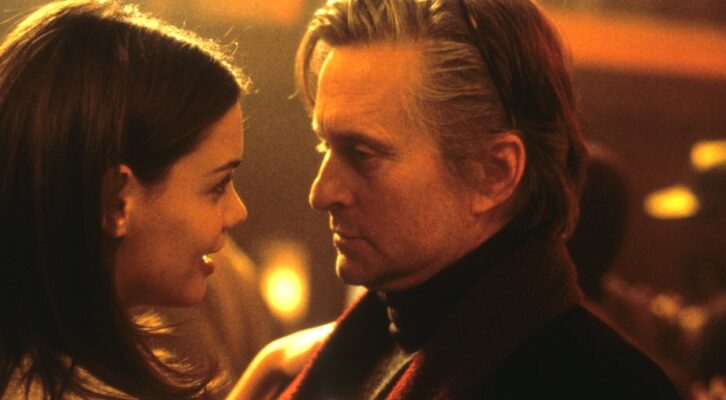
In Praise of Wonder Boys (Both the Book AND the Movie)
Ed Simon on Michael Chabon’s Iconic Campus Novel at 30
Architect Henry Hornbostel’s 1905 School of Applied Design, now Carnegie Mellon University’s College of Fine Arts building, is a beaux arts structure built around a cavernous, marble-laden Great Hall featuring a curved ceiling mural depicting the great buildings of the world—the Pantheon, Notre Dame—with schematic illustrations of similar landmarks inlaid into the floor.
Along the transept of the building are niches in the wall, each displaying a statue meant to demonstrate various periods of sculptural art, including one of a Medieval Virgin Mary holding the infant Christ. That particular statue appeared in the 2000 Curtis Hanson directed film Wonder Boys, released twenty-five years ago today, itself an adaptation of Michael Chabon’s novel of the same name which was published thirty years ago next month. I walk by that Virgin Mary at least once a week, since I like the funky coffee shop located just around the corner from the statue.
In the movie, creative writing professor Grady Tripp faints in front of this statue because of a mixture of codeine, whisky, and pot. When Tripp becomes conscious again, it’s to see the Virgin Mary replaced by university chancellor Sara Gaskell, who the professor is also having an affair with. Theirs is a complicated relationship—“She was a junkie for the printed word,” says Michael Douglass as Tripp in voice-over narration during another scene. “I manufactured her drug of choice.” She helps Tripp up, and the two have a brief, fraught conversation.
Sara is pregnant and married to the chair of the English Department. A small pistol falls from Tripp’s jacket, confiscated from his genius student James Leer, and used earlier (unbeknownst to the chancellor) to murder Sara and her husband’s pit-bull after it attacked Tripp. The professor lies and says that it’s a cap gun, a souvenir purchased in Baltimore. The chancellor places it to his chest and pulls the trigger as a joke. The chamber is empty.
Once a part of our surprisingly vibrant literary scene, Chabon both gets Pittsburgh and her writers, respecting us enough to gently mock.
Wonder Boys—both the book and the movie—never reached the audience it deserved, despite having a long afterlife and relative critical acclaim. Those two works are different enough, in tone and narrative, that it’s fair to think of them as entirely separate yet equally successful texts (even while in the movie, two background characters at a party who are discussing an unnamed adaptation conclude that “I thought that it was more literary than cinematic”).
Yet both are concerned with the same character, the pot-head Professor Tripp, famed for his one-off The Arsonist’s Daughter, but who has since suffered the logographic inverse of writers’ block, finding himself incapable of completing his sophomore effort that now runs into thousands of pages. “I had too much to write,” says Tripp in the novel, “too many fine and miserable buildings to construct and streets to name and clock towers to set chiming, too many characters to raise up from the dirt like flowers whose petals I peeled down to the intricate frail organs within.”
In a bleak Pittsburgh February, the professor recently abandoned by his wife must attend Worldfest, the department’s annual weekend dedicated to writers, editors, publishers, and agents. Alongside Tripp and Sara, there is the former’s dissolute New York editor Terry Crabtree, Quintin “Q” Morewood, who is the college’s most successful novelist, Hannah Green, a student who rents an apartment in her professor’s house, and James Leer, the brilliant, precocious, and duplicitous young writer who is the eponymous wonder boy. In the course of around seventy-two hours, there are marriages broken, dogs killed, cars stolen, guns pulled, manuscripts lost in the Monongahela, while Marilyn Monroe’s white-fur-lined black wedding jacket is filched.
Hanson’s adaptation is perfectly cast; a rumpled and deadpan Douglass as the stoned yet subtle Tripp, Moneson’s own Frances McDormand as the long suffering Gaskell, as the editor a pre-redemption Robert Downey Jr. at his smarmy best, a stentorian Rip Torn as “Q,” a mid-Dawson’s Creek Katie Holmes as Hannah Green, and Tobey Maguire as the pubescent-voiced, death-haunted Leer. Then there is the soundtrack, dominated by Bob Dylan and bookended by “Things Have Changed,” the song garnering the movie’s only Oscar, though the lyrics alone would have justified the Nobel. But the most arresting feature is Pittsburgh.
Cinematographer Dante Spinotti did for Pittsburgh in Wonder Boys what he did for Los Angeles in L.A. Confidential (also directed by Hanson)—he made the city an indelible character. Evident from the wood-paneled back wall of CMU’s Kresge Theater to the red-leather booths of the fictitious Hill District Hi-Hat Club (which I swear is based on the defunct North Oakland Mitchell’s—both had Clarence Carter on the jukebox), from the hand-lettered Giant Eagle sign advertising pierogies to the contractor’s van with the mill-hunkie name of Kravnick’s.
“After I read the book,” Hanson told Entertainment Weekly in 2000, “I saw this city that really struck me.” The film eschews the reductionism that proliferates in depictions of the city—there are no shots of the Duquesne Incline climbing Mt. Washington or of the Downtown skyline view as one emerges from the Fort Pitt Tunnel. The tells are more subtle—pictures of bridges throughout, whether in a welcome sign at the airport or a painting in Tripp’s office, while the sky is grey and the freezing rain unceasing.
Andrew O’Heir at Salon lauded how the film captured “Pittsburgh (one of the most serendipitously beautiful American cities)… with brilliant precision,” in part by letting the region organically breathe throughout the movie. As Tripp drives his 1966 maroon Ford Galaxie 500, the craggy hills and brown water of the city are visible outside, the burning luminescence of a steel mill operates as sheets of grey snow fall along the riverbanks.
As a lecturer in the same department, I often get a brief thrill when suddenly walking onto a Wonder Boys set; Baker Hall 235B, the classroom at the opening of the movie, which is diagonally across the hall from my own office suite; the Palladian colonnade of Margaret Morrison Hall which I drive by every morning; the serpentine path of Schenley Drive, the peak of the University of Pittsburgh’s gothic Cathedral of Learning visible across the bridge. When I first saw Wonder Boys the day it came out, I was enchanted, because I’d never seen my home neighborhood depicted on the screen before.
Hollywood’s stereotype of Pittsburgh—which for sure has its elements of truth—is all blast furnaces and hot metal, the industrial Pittsburgh of Flashdance or of The Deer Hunter in nearby Clairton. By contrast, Wonder Boys was the east end academic Pittsburgh of Victorian and craftsman homes, of wood banisters and coffered ceilings, where even working-class row homes have stained glass windows and there are piles of used books everywhere. The movie became one of my favorites when I was sixteen; that twenty-five years later my daily beat finds me in the frames of Wonder Boys (as an extra) is surreal.
Having grown up in the city’s east end, not far from Pitt and CMU, and the host of other colleges and universities which have effectively transformed the economy of the region after the collapse of the steel industry, Wonder Boys’ Pittsburgh was recognizable to me, a company town where the management had long since changed, where now the rhythms of the semester define life, and community gravitates towards the Oakland neighborhood where the two most prominent institutions of higher education are largely located. If the movie presented my own life to me in a way I hadn’t expected, then that’s even truer of the novel, where Chabon demonstrated to me the possibility of capturing the essence of a place in all of its specificity.
That’s not to say that other writers don’t do this—all great writers do. It’s only to say that Chabon was the writer who proved to me that it’s possible, since I could finally confirm the reality of what I was reading. Having moved to the city when he was twelve, Chabon later attended both CMU and Pitt, studying under the brilliant West Virginia writer Chuck Kinder, obviously the inspiration for Tripp (I take it on good authority that he knew, but never commented).
As a momentarily adopted Pittsburgher, Chabon showed the city to us, along with our provincialisms and peccadillos, our beauty and grit. In one scene, Tripp describes a party at his house, writing that “there were so many Pittsburgh poets in my hallway that if, at that instant, a meteorite had come smashing through my roof, there would have never been another stanza written about rusting fathers and impotent steelworkers and the Bessemer convertor of love.” Once a part of our surprisingly vibrant literary scene, Chabon both gets Pittsburgh and her writers, respecting us enough to gently mock.
Wonder Boys is about what it means to be a writer; not in the boozy shenanigans, but in terms of what it means to be before an empty page.
Reviewers often include Wonder Boys alongside John Williams’ Stoner or Donna Tartt’s The Secret History as among the greatest campus novels, and its adaptation one of the best cinematic representations of the university. Roger Ebert—ABD at the University of Chicago—aptly called it the “most accurate movie about campus life that I can remember” (though there are less dead dogs normally), while O’Heir writes that “If you went to a liberal-arts college…then the way Grady’s ramshackle house looks in the wake of Crabs’ enormous all-night party should conjure up vivid sense-memories,” of cashed cigarettes and emptied Iron City beers, of arguments over the poetry of Jack Gilbert and Gerald Stern.
But more than anything, Wonder Boys is about what it means to be a writer; not in the boozy shenanigans, but in terms of what it means to be before an empty page. Writing is labor, the wrangling of syntax like unfurling tangled wires, diction about finding the right tool. Tripp thinks of himself as a “massively incompetent handyman” lulled by the “ceaseless whining of my saw.” In Chabon’s descriptions, and Hanson’s translation, writing may be work, but it’s also mysterious.
In Chabon’s novel (but not the movie), Tripp speaks of the “Midnight disease,” a type of possession which makes it so that the writer can be nothing other than herself. “The midnight disease is a kind of emotional insomnia,” explains Tripp, “at every conscious moment its victim—even if he or she writes at dawn, or in the middle of the afternoon—feels like a person laying in a sweltering bedroom, with the window thrown open, looking up at a sky filled with stars and airplanes, listening to the narrative of a rattling blind, an ambulance…while all around him the neighbors sleep soundly.”
This malady, if it’s fair to call it that, is a type of hyper-attention, an inability to process reality but through narrative. Writing not for fame, accolades, or God-knows money, but simply because it’s that which constitutes you, which defines you. Tripp’s never-ending writing is less like working on an assembly line and more like being a butterfly weaving her silk (to borrow a metaphor from Marx), for the later such labor is intrinsic to her very definition. Grady Tripp can’t not be a writer. There are those who write for whom this isn’t the case—great and brilliant writers even. And the converse as well. But the midnight disease is different; it’s ethereal, numinous, cracked, strange, and transcendent. Mysterious.
Which is why for me the most beautiful scene isn’t just about writing, but reading. After Tripp has returned an unwilling Leer to his parents in the parking lot of a suburban Howard Johnson’s, he discovers that the student has forgotten the manuscript to his novel The Love Parade in his professor’s car. Lighting a spliff, Tripp reads through the entire book page by page, laying out the completed portions on his dashboard, as snow swirls around the locked car. The most honest moment between the two, and Leer isn’t even there. Because we finally always write alone—but we also write for other people.
Ed Simon
Ed Simon is the Public Humanities Special Faculty in the English Department of Carnegie Mellon University, a staff writer for Lit Hub, and the editor of Belt Magazine. His most recent book is Devil's Contract: The History of the Faustian Bargain, the first comprehensive, popular account of that subject.









